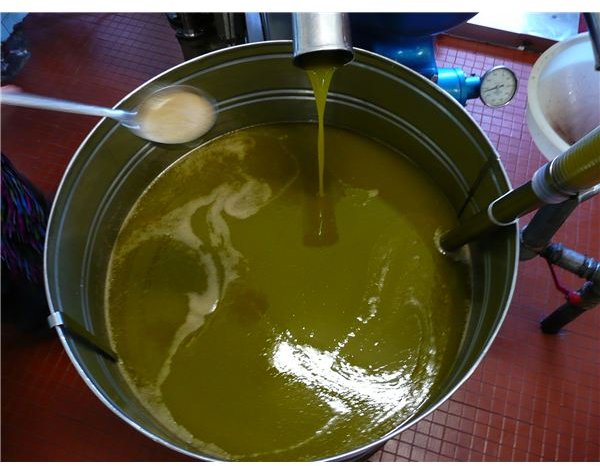A Guide to Inflammation Diet Meal Plans
Inflammation plays an important role in human health. It defends the body against bacteria, viruses and other foreign invaders, heals the body by preventing wounds from festering, and repairs damaged tissue. Chronic inflammation, however, induces the formation of artery blocking clots, leading to atherosclerosis, and causing heart attacks, strokes, peripheral artery disease, and vascular dementia.
The major cause for inflammation is the body’s reaction to external irritations. The association of inflammation and diet is proven, with consumption of high-fat, high-calorie meals, and highly processed foods promoting inflammation. While research on medication to reduce inflammation is still in its nascent stages, eating the right foods reduce inflammation to optimal levels.
Fats and Oils
Oils play a major role in promoting inflammation. Saturated and trans-fat oils, and hydrogenated vegetable oils promote inflammation. The inflammation meal diet plan should therefore, exclude foods such as processed baked goods, crackers, and deep-fried foods that contain such oils. The meal plan should also exclude the use of corn oil, sunflower seed oil, and cottonseed oil for cooking purposes, as these oils promote inflammation.
On the other hand, olive oil and polyunsaturated fats, especially omega-3 fats from fish, have potent anti-inflammatory properties. The inflammation diet meal plan would do well to include salmon, halibut, mackerel, herring, tuna, sardines, walnuts, pumpkin seeds, and freshly ground flaxseeds or oil, which are all rich in Omega-3 fatty acids. However, one important point is that rancid oils, even when in “healthy” category, increase inflammation.
Proteins
The human body requires protein to build healthy body tissue. The best protein sources to keep inflammation in check are lean poultry, fish and seafood, nuts, legumes, seeds, soybeans, tofu, and soy milk. Fatty red meats trigger inflammation and are best avoided.
Walnuts, peanuts, almonds, and other nuts and seeds ease inflammation and make for great snack options in the inflammation diet meal plan.
Carbohydrates and Fiber
Highly refined carbohydrates and sugars in white bread, white rice, French fries, and carbonated soda increases cytokines that promote inflammation. On the other hand, sourcing carbohydrates from whole-grain bread, brown rice, and other whole grains and fruits prevents blood sugar and insulin levels from shooting up rapidly, especially after meals, thereby inhibiting cytokine production and keeping inflammation in check.
Fruits and vegetables constitute an important part of the inflammation diet meal plan, owing to the presence of substances that inhibit the free radicals responsible for causing inflammation. Citrus fruits, tomatoes, green leafy vegetables, parsley, cabbage, asparagus, avocados, cantaloupe, currants, mangos, cherries, pineapple, kiwi, papaya, peppers, pineapple, strawberries, blueberries, onions as well as green tea all inhibit COX2, which is an enzyme responsible for inflammation.
The best fruits and vegetables for an anti-inflammation diet are green leafy vegetables, brightly colored fruits such as apples, and brightly colored vegetables such as red onions, because they contain quercetin, which is a phytochemical with strong anti-inflammatory properties.
Good inflammation diets provide for at least five servings of fruits and vegetables daily.
Others
Preliminary research suggests that cocoa and dark chocolate slow the production of signaling molecules involved in inflammation. The trick is to get them without too much sugar and fat.
Herbs and spices such as rosemary, turmeric, ginger, garlic, basil, pepper, and many others have anti-inflammatory properties.
Diet Plans
The best approach towards an inflammation diet meal plan is to choose foods that ease inflammation over foods that cause or promote inflammation. Two ready-made inflammation diets that serve this purpose are the Mediterranean diet plan and the Harvard Healthy Eating Pyramid, developed by Dr. Walter Willett and others.
The mediterranean diet, heavy in fresh, unprocessed vegetables, fruits, nuts, monounsaturated fats, fish, and wine, and light on meat, dairy and saturated fats remains best suited for an anti-inflammatory diet.
The American Dietetic Association also has a specific anti-inflammation diet with three plans: therapeutic, prevention or maintenance, and reduced calorie plan. All these diet plans predominantly include inflammation-fighting foods.
Apart from diet, steps to avoid inflammation include avoiding cigarette smoke, exercising, controlling weight, and taking care of your teeth.
Reference
- Harvard Medical School. Family Health Guide. “What you eat can fuel or cool inflammation, a key driver of heart disease, diabetes, and other chronic conditions.” Retrieved from https://www.health.harvard.edu/fhg/updates/What-you-eat-can-fuel-or-cool-inflammation-a-key-driver-of-heart-disease-diabetes-and-other-chronic-conditions.shtml on 14 March 2011.
- University of MInnesota. “What Should I Eat for My Specific Condition?” Retrieved from https://www.takingcharge.csh.umn.edu/explore-healing-practices/food-medicine/what-should-i-eat-my-specific-condition on 14 March 2011.
- American Dietetic Association. “The Inflammation-Free Diet Plan” Retrieved from https://www.eatright.org/Media/content.aspx?id=10469 on 14 March 2011.
Image Credit: flickr.com/pizzodissvo
